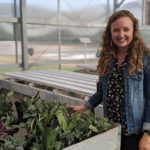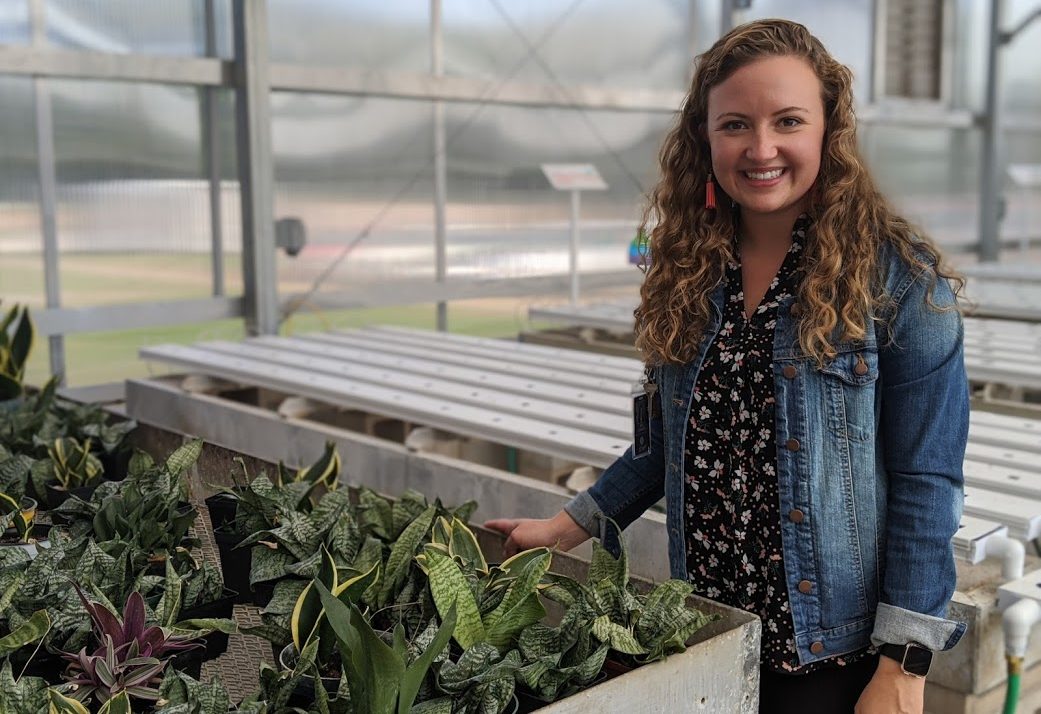Although students are not physically in class at the Holmen School District, the building is abuzz with change.
Between COVID-19 and renovations from a $23.5 million referendum, the hallways are drastically different for the Holmen Vikings. Adding her enthusiasm to the transition in an abnormal year, Joelle Liddane is making her mark as the new agriculture education teacher.
Liddane grew up on her family’s dairy and beef farm on the north side of Tomah. She was involved in sports, academics, and of course, agriculture. FFA provided endless opportunities, and she eventually served as a State FFA officer in 2015 to 2016. She then attended UW-River Falls for agricultural education and quickly gained classroom experience intern-teaching in Chippewa Falls. She accepted a mid-year job opening to teach in Clintonville, Wis. before taking the full-time position in Tomah.
“I grew up in the same district and section as Holmen for FFA, so we would compete against Holmen,” Liddane said. “Everybody knew Holmen because they were great at Parli Pro. I was able to come here and visit and get a feel for the community. I knew that if it would work out, this would be a really great place to be.”
Timing was also key as the previous agriculture teacher, Roger King, retired in the past year and left the legacy of a strong agriculture program. However, teaching such a hands-on topic online required a creative approach.
A big part of her excitement for the position grows with the district’s Farm to School Program. The school’s new greenhouse helps provide fresh vegetables for students. Liddane gestured to their asparagus garden and noted FFA members are growing beef and pork on their farms that will be used in the school lunch program. She credited their ability to work independently on these supervised agricultural experiences.
“I had a student call Craig’s Meats to get our spot,” Liddane said. “She actually reached out to me this summer saying, ‘I’m having a hard time with all of the processing.’ That’s a 16 to 17-year-old that understands the food chain, and that was a really cool thing to see.”
Liddane has found unique ways to adapt with her students. For instance, she challenged her greenhouse class, which is a transcripted credit with Western Technical College, to find monocots and dicots. They were able to identify grasses and bulbs in their own backyards.
There is no end date on COVID-19, but when students do return, they will step into classrooms currently being updated through the referendum. The agriculture shop will have increased space that could possibly house large animal visitors.
“I don’t foresee them living here long term, but at least for classes, we will be able to have that hands-on learning,” Liddane said.
She also looked forward to bringing the entire agriculture department into one section of the school so that she can see students working in the greenhouse while teaching in the classroom.
Liddane’s FFA students are still meeting virtually. One silver lining of not having as many in-person activities is that Liddane can connect new students to agriculture. Since her calendar is more open, she volunteered to be the assistant Cross Country coach for Holmen girls.
“It has been really neat for me being new to the area since I can meet more people,” Liddane said. “I was talking with one of my students, and he said it would be cool to learn how to tap trees. That is a connection that we would not have had prior to me becoming part of the community.”
Her chapter in Holmen is just beginning, but her goal as a young educator is to continue letting students have some control over their own agriculture story whether they are interested in honeybees, landscaping, welding, or any part of the food and natural resources system.
“I’m really eager for a lot of things to be able to happen all at once,” Liddane said. “I can feel this is already becoming my home, and I can’t wait for the opportunities that we can have here.”
Liddane said the biggest way the community can help in this year of change is to create partnerships that can give students learning or employment opportunities.



